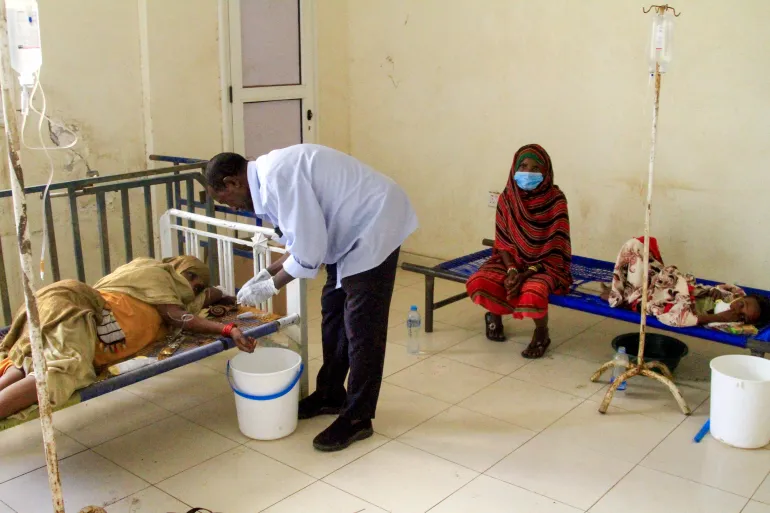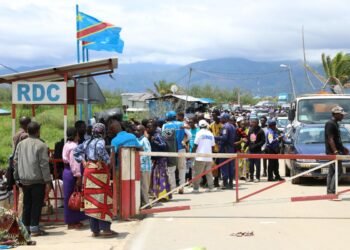The ongoing conflict in Sudan has wreaked havoc on towns and cities, leading to a catastrophic collapse of the nation’s healthcare system.
Amidst this turmoil, public health officials warn of surging cholera and dengue fever outbreaks, with hunger levels alarmingly “above the famine threshold.” According to the UN Office for the Coordination of Humanitarian Affairs (OCHA), the situation continues to deteriorate, putting countless lives at risk.
In a recent report, OCHA detailed that from July 22 to October 28, more than 28,000 cases of cholera were recorded, resulting in 836 deaths across 11 states. The agency cautioned that the actual number of infections may be significantly higher due to under-reporting.
In tandem, dengue fever cases are also on the rise, particularly in the states of Kassala and Khartoum, where health authorities have identified 4,544 cases and 12 related deaths as of October 28.
Rain Compounds Disease Outbreaks
The cholera outbreak has been exacerbated by an unusually heavy rainy season, which has led to flooding that contaminated vital water sources. Kassala state bears the brunt of this health crisis, reporting 6,868 cholera cases and 198 deaths. The provinces of Gedaref, Al Jazirah, and Northern State have also seen significant numbers.
As the Sudanese Ministry of Health declared a new wave of cholera on August 12, efforts to combat the outbreak have intensified. In October, a vaccination campaign was launched, aiming to immunize approximately 1.4 million people in the hardest-hit regions.

Meanwhile, the situation is worsened by ongoing conflict and blockades, particularly in El Fasher, North Darfur, where violent clashes between the Sudanese Armed Forces (SAF) and the Rapid Support Forces (RSF) have severely disrupted humanitarian efforts.
“This has delayed or prevented the delivery of commercial and humanitarian supplies to areas of acute need,” OCHA reported, underscoring the dire circumstances faced by those in need.
Famine Risk Escalates
Humanitarian agencies, including Médecins Sans Frontières (MSF), have sounded the alarm over increasing levels of acute malnutrition. In the Zamzam internally displaced persons camp, malnutrition rates are “above the Famine (IPC Phase 5) threshold,” indicating a growing crisis.
Conditions were confirmed as famine in Zamzam camp back in August, and while data for other nearby camps remains limited, the movement of civilians seeking safety and services has intensified.
However, these essential services are under severe strain. MSF had to halt treatment for about 5,000 malnourished children in Zamzam camp as of October 10, citing prolonged blockades that have impeded the delivery of critical supplies.
As humanitarian needs surge, there is increasing concern about food insecurity among internally displaced communities in besieged areas, particularly in Dilling and possibly Kadugli in South Kordofan state.
Healthcare System on the Brink
The healthcare infrastructure in Sudan is nearing total collapse. The World Health Organization (WHO) reports that up to 80 percent of health facilities in conflict-affected regions — such as Al Jazirah, Kordofan, Darfur, and Khartoum — are either barely functional or completely closed due to shortages of supplies and fuel.
This breakdown is severely hampering vaccination programs and heightening the risk of widespread outbreaks of preventable diseases.
Attacks on healthcare facilities have increased since the onset of hostilities in April 2023, with 116 incidents documented, resulting in 188 deaths and 140 injuries among medical staff and patients. The WHO has condemned the widespread violence, looting, and intimidation that medical personnel face daily.
As the humanitarian crisis in Sudan deepens, displacing more than 11 million people and forcing three million across its borders, aid organizations are scrambling to respond. Currently, efforts have reached 12.6 million individuals, yet the scale of the crisis continues to challenge these endeavors.
READ ALSO: Gloria Sarfo Calls Out AMAA for Fake Flight Itinerary





















